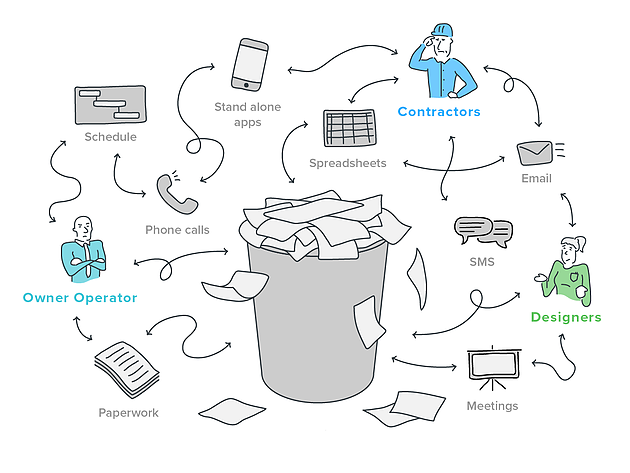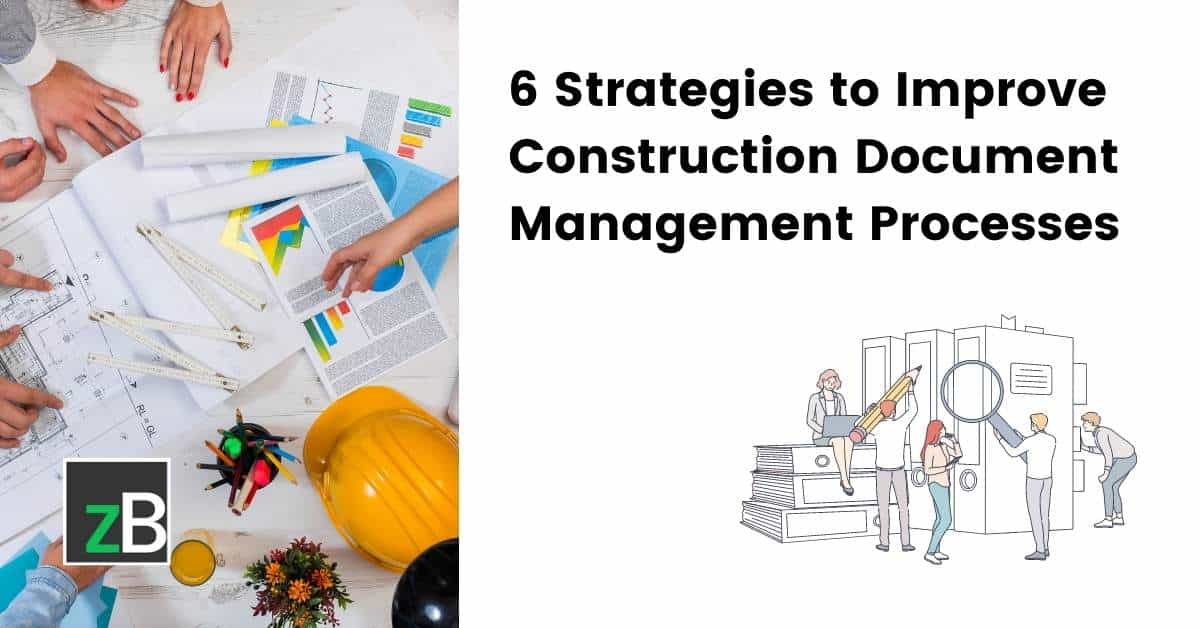Effective Construction Document Management Solutions for Every Project
Effective Construction Document Management Solutions for Every Project
Blog Article
Optimizing Job Partnership: Architect's Ideal Practices in Construction File Monitoring
In the intricate world of building tasks, the effective management of building and construction files stands as a foundation for success. Architects, with their precise interest to information and cutting-edge layout solutions, are tasked with orchestrating a symphony of stakeholders, resources, and timelines. Nevertheless, among this intricacy lies a sixty-four-thousand-dollar question: exactly how can architects improve collaboration procedures to enhance task end results? By exploring essential techniques such as leveraging cloud-based systems, developing durable communication procedures, and making certain data security, engineers can boost their file management techniques to brand-new elevations.
Leveraging Cloud-Based Systems
By transitioning from typical paper-based systems to shadow services, engineers can improve cooperation, enhance paper ease of access, and boost total project performance. This availability advertises seamless interaction and control among project stakeholders, leading to less mistakes and delays in the building process.
Moreover, cloud-based systems supply a safe and secure setting for saving delicate job information, providing file encryption, normal backups, and customer consent settings to safeguard information honesty. Engineers can likewise gain from the scalability of cloud options, permitting them to adjust storage capacity and capability based on job demands. In general, leveraging cloud-based platforms empowers architects to enhance their construction record administration processes, driving higher partnership, performance, and success in their projects.
Implementing Version Control Systems
Having actually developed the advantages of cloud-based systems in construction document administration, designers can currently improve their record control procedures by implementing Version Control Equipment. Version Control Equipment (VCS) are vital tools that track adjustments in papers, ensuring that employee are always functioning with the current and most exact information. By executing VCS, architects can keep a centralized repository where all project documents are saved, enabling smooth partnership while minimizing the risk of mistakes and version problems.
One trick benefit of Version Control Equipment is the capability to track the complete history of record changes, allowing customers to go back to previous versions if required (construction document management). This feature is especially useful in construction jobs where design iterations and adjustments are typical. VCS facilitates far better interaction amongst team participants by giving a clear audit path of that made particular modifications and when they were made. This openness not only boosts accountability but additionally assists in resolving conflicts or inconsistencies that may emerge during the project lifecycle.
Developing Interaction Procedures
To ensure efficient and efficient job coordination, architects need to develop clear and robust interaction procedures within their building and construction document monitoring processes. Communication protocols define the methods, regularity, and channels where group members exchange information, updates, and comments. One necessary facet of establishing these procedures is determining a centralized communication platform where all project-related discussions and record sharing can take area. This system can be a project monitoring software program, e-mail threads, or cloud-based storage remedies. By establishing standards on how info is shared and exactly how team members connect with each various other, architects can simplify the flow of data and prevent miscommunications or hold-ups in the construction process.
Moreover, interaction protocols should also consist of guidelines on exactly how to handle conflicts, modification orders, and urgent concerns that may arise throughout the job lifecycle. Establishing a structured approach to interaction makes sure that all stakeholders are on the exact same web page, advertises openness, and inevitably contributes to the successful completion of the building and construction job.
Making Use Of BIM Software Program for Coordination
BIM software application plays a crucial function in improving control amongst job employee in the building market. Building Info Modeling (BIM) facilitates cooperation by providing a centralized platform where architects, designers, specialists, and various other stakeholders can function with each other in a worked with fashion. Through BIM software, job individuals can access and upgrade a shared version that includes thorough details about the building design, construction elements, and task timetables.

Additionally, BIM software program enables real-time partnership and interaction among employee, regardless of their physical place. Via cloud-based BIM platforms, project stakeholders can access the current task details, track adjustments, and make notified decisions without delay. In general, leveraging BIM software program for sychronisation boosts job efficiency, productivity, and eventually results in effective job outcomes.
Ensuring Data Safety And Security and Compliance
In the world of construction file monitoring, protecting data stability and ensuring governing compliance are extremely important factors to consider for engineers and other job stakeholders. Architects need to execute robust safety and security actions to secure sensitive project info from unauthorized gain access to or violations.

Verdict
To conclude, engineers can enhance project cooperation in building record monitoring by leveraging cloud-based systems, carrying out version control systems, developing communication methods, utilizing BIM software program for control, and making sure data safety and conformity. These ideal techniques help simplify the building and construction procedure, improve find more interaction amongst task stakeholders, and improve efficiency in job distribution. By following these guidelines, engineers can successfully handle construction records and assist in effective task results.
Through BIM software, job individuals can access and update a shared version that contains comprehensive info about the structure style, building and construction parts, and task timetables.
Via cloud-based BIM systems, project stakeholders can access the most current project details, track adjustments, and make informed decisions without delay - construction document management. In general, leveraging BIM software for sychronisation improves task effectiveness, productivity, and eventually leads to successful project results
In verdict, architects can optimize job cooperation in construction file monitoring by leveraging cloud-based systems, applying variation control systems, establishing communication methods, making use of BIM software for sychronisation, and ensuring data safety and security and conformity. These best practices help enhance the building procedure, enhance interaction among project get more stakeholders, and boost effectiveness in task shipment.
Report this page